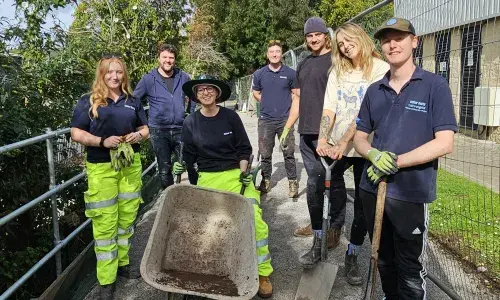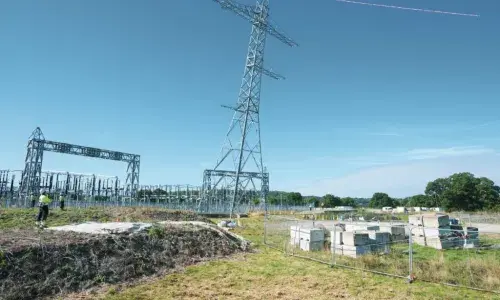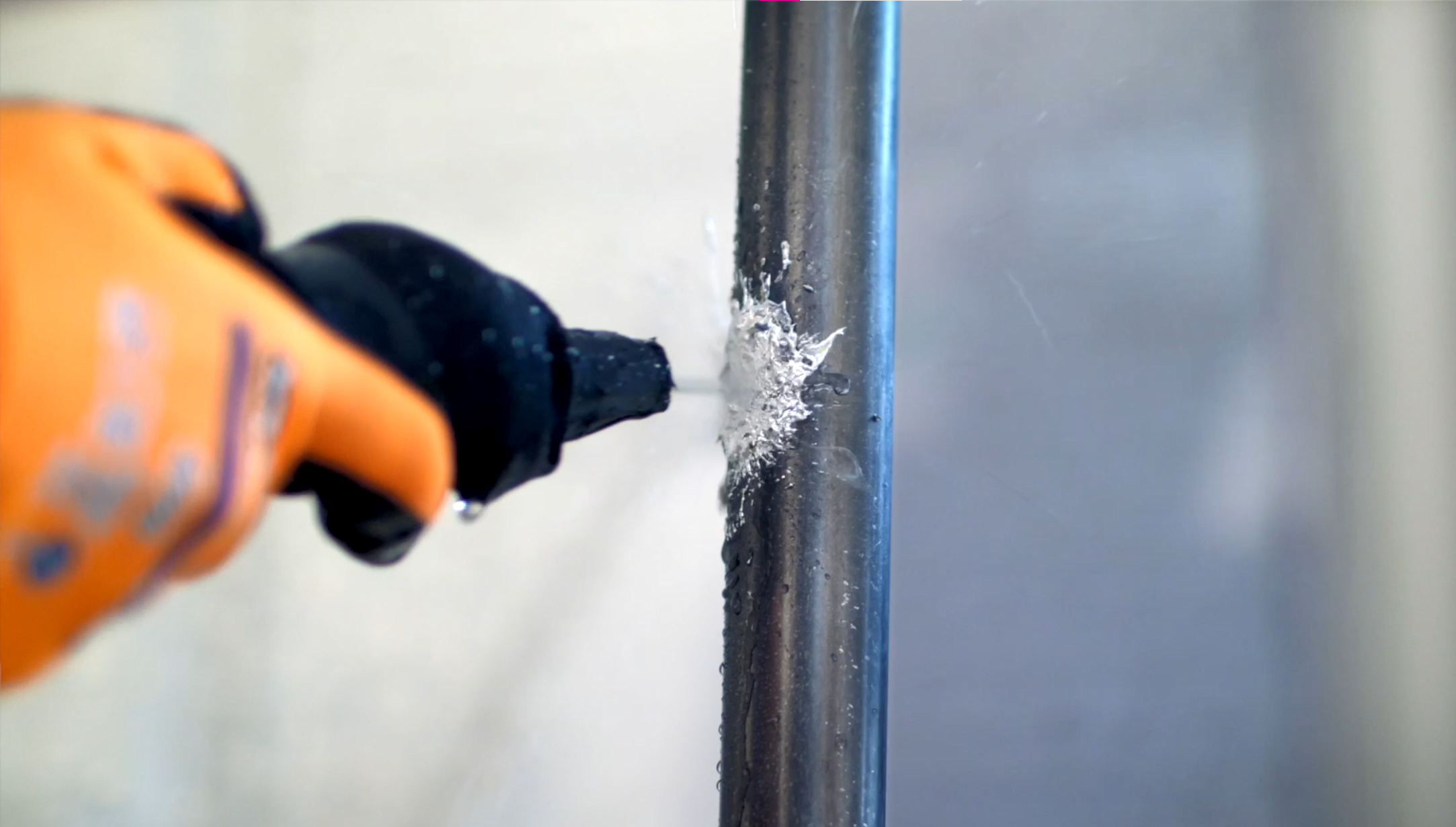
National Grid test two new carbon cutting approaches at Deeside Centre for Innovation Centre
Later this year, Deeside Centre for Innovation (DCI), is planning to open its doors to become the first test centre in Europe where electricity network innovations can be investigated, tried, and tested to voltages of up to 600kV in a safe substation environment, prior to being rolled out on live transmission and distribution systems.
As a testing ground for innovation at DCI, National Grid Electricity Transmission (NGET) has already begun trialling two new innovative solutions to cut harmful environmental emissions. From reducing Sulphur Hexafluoride (SF6) leaks from its pipework, to trialling a low carbon cement-free concrete, these projects, are another step forward on the journey to meet our net zero targets.
Hear from the project team leaders about these exciting innovation projects.
Robert Everitt, Lead Transmission Engineer for NGET leading on the Cemfree project, says:
We are currently testing a new patented concrete mixture called Cemfree, which potentially has a carbon footprint of 80% less than conventional types.
Cemfree is a cement-free alternative to conventional concrete and a ground-breaking milestone in low-carbon concrete technology.
Typical barriers to adoption of innovative concrete products include how they will behave on site and long-term durability. To address this, the project team are currently testing two large scale slabs (~50m3) to identify the differences in performance between Cemfree and a conventional concrete.
In addition, smaller monitoring strips have been cast with probes to detect any early corrosion of reinforcement. The aim is to obtain real world experience using the product with a view to future use on NGET substations and throughout the wider construction industry.
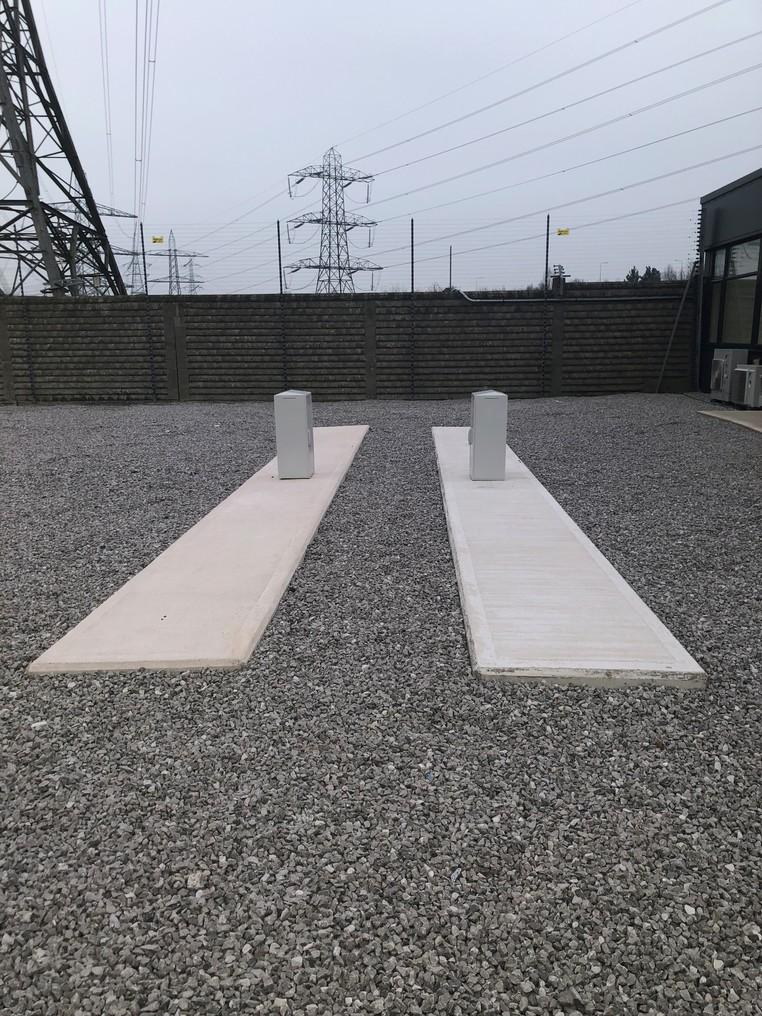
Using Cemfree for just one slab foundation at Deeside has saved approximately 13 tonnes of CO2 emissions, when compared to a Portland 100% cement binder. These savings could be magnified by increased adoption in the UK construction industry, which uses circa 20 million m3 of ready mix concrete each year.
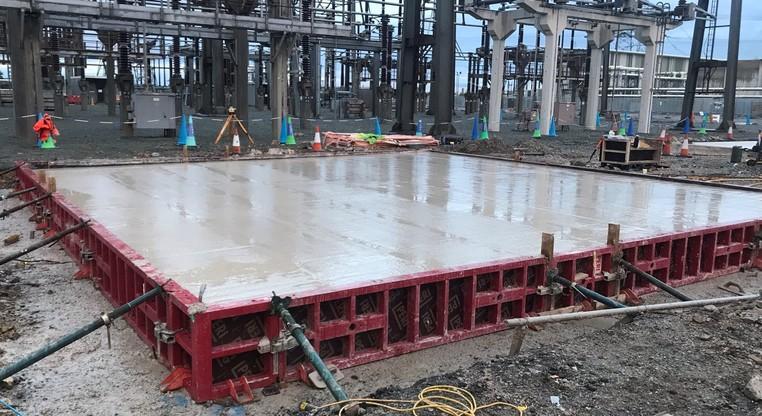
Another exciting innovation project at DCI is a collaboration with UK-based Rawwater on delivering a novel method of sealing harmful environmental SF6 leaks by reducing emissions from small-bore pipework.
Project lead Gordon Wilson, Innovation Engineer at NGET Net Zero Innovation, says:
SF6 is a gas commonly used in the electricity industry to prevent short circuits and to keep the network safe and reliable. To faster seal SF6 leaks, we are trailing a process using Rawwater’s M3 Molten Metal Manipulation technology.
It is one of a number of approaches being used by NGET to tackle emissions of SF6, including a collaboration with Hitachi Energy to replace SF6 in existing high-voltage equipment with a greener alternative.
Rawwater’s M3 process involves the use of either a ‘leak extinguisher’ alloy spray or an easily deployed ‘CollarCast’, where molten alloy is cast into a custom-made, reusable mould. Both application techniques are low temperature and require no curing time, allowing for in-service application against flowing leaks.
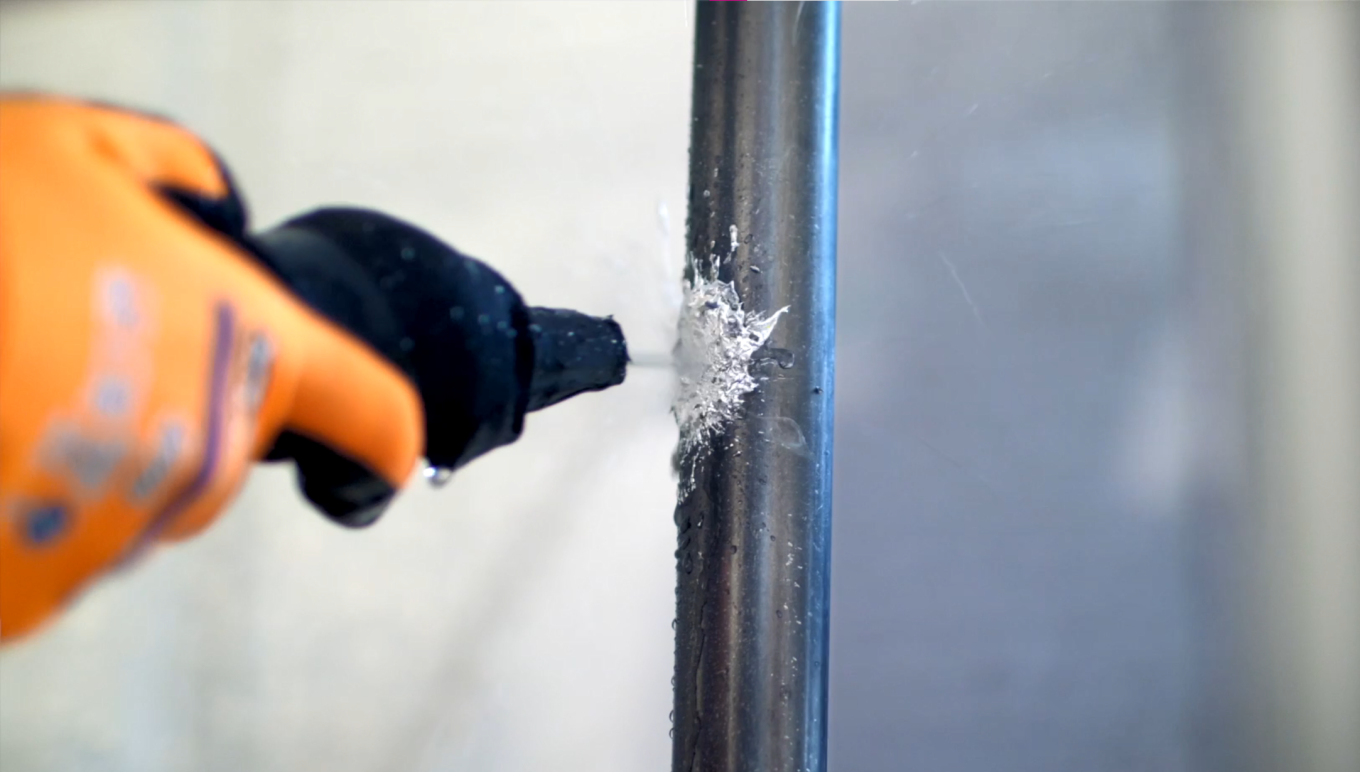
We’ve already tested Rawwater’s M3 alloy spray in difficult-to-access areas to demonstrate its deployability in restricted environments. The M3 CollarCast process has been trialled to heavily mitigate flowing nitrogen leaks (used to simulate SF6) at pressures of up to 7bar, without the need for a system outage. The reversibility of M3 (a simple process involving reheating) has also been demonstrated, to show that equipment can be returned to its original state for access to the pipework for any reason, with any recovered alloy being retained for reuse. As a result of these successful initial trials, National Grid and Rawwater will now test the leak-sealing capabilities of M3 Molten Metal Manipulation against contained SF6 leaks.
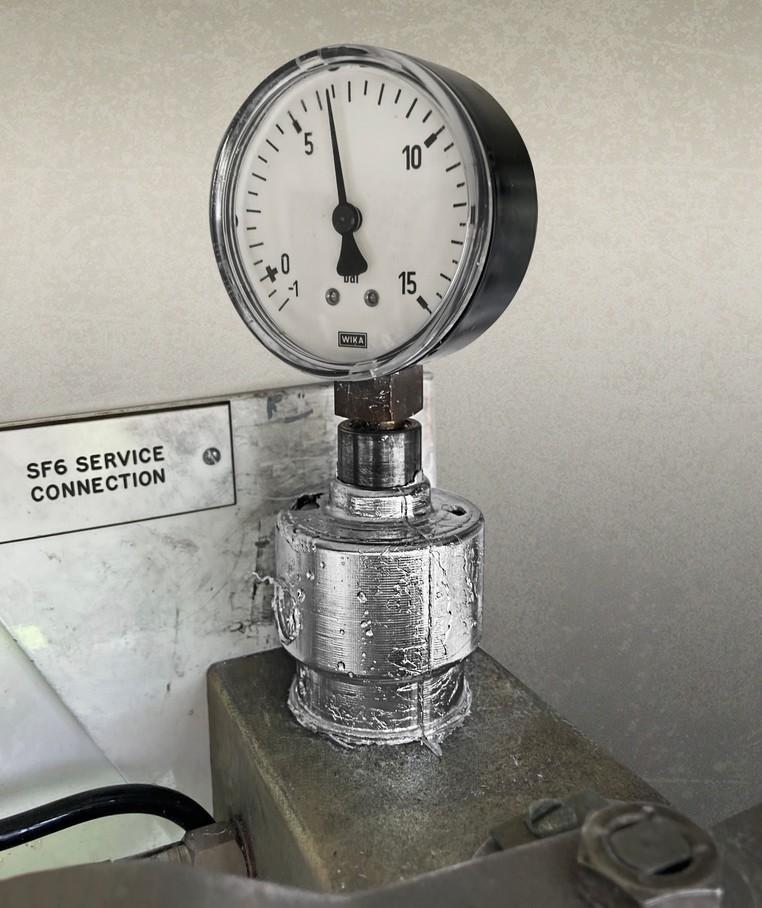
Alexander Yanushkevich, Deeside Centre for Innovation Manager, at National Grid, says:
Projects such as the trial of Rawwater’s M3 leak-sealing capabilities, where we are investigating new techniques to prevent loss of SF6 to the atmosphere, are just one of the ways innovation can contribute to National Grid’s commitments to reduce emissions and help achieve Net Zero.
We are always looking for new ways to innovate and the Cemfree trial is also very exciting with considerable carbon-saving potential. Initial results have been very positive, and we will continue to explore its potential as a sustainable alternative to traditional concrete.
DCIs ambition is to become a globally recognised centre for innovations and collaborations in all green technologies. Deeside’s role in accelerating carbon-free and cost-saving technology is expected to save households and businesses up to £300m by 2050.
To learn more about Deeside for Innovation Centre, click here, and to find out more about how National Grid is also developing and deploying a new solution to replace SF6 with a greener alternative click here.

